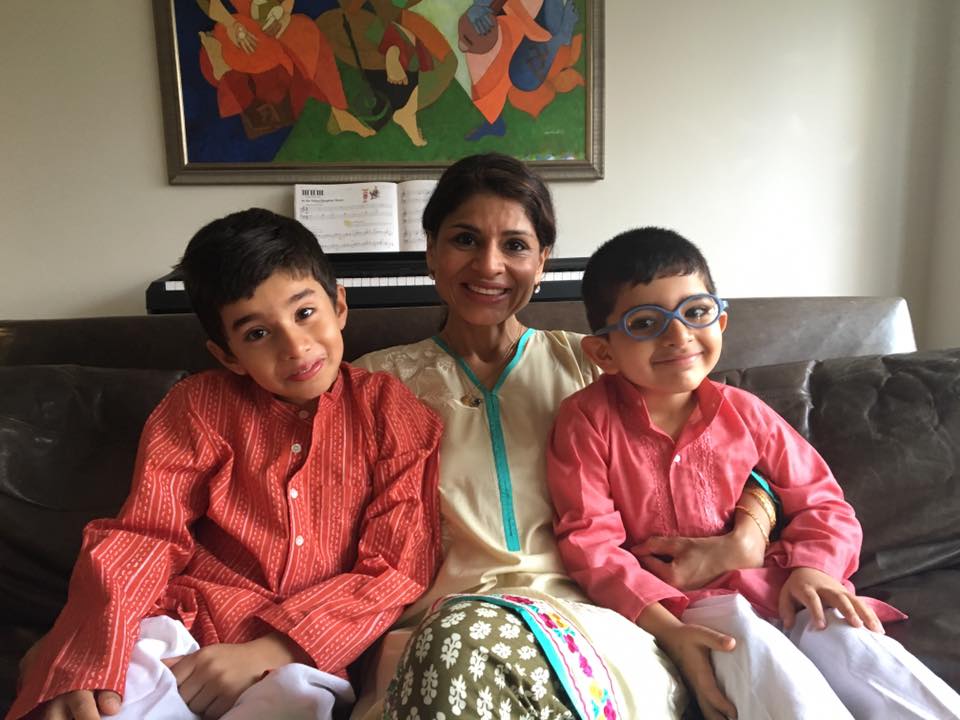
Cultural education is important for children to develop a strong sense of identity. To make learning fun and seamless, children have to experience culture in a multi-sensorial way, including a 360-degree exposure through art, family, friends, food, language, sports, travel, books, festivals, traditions, music, movies, museums, dance, and architecture. Parents should take every opportunity to positively expose their children to any culture.
But how do you make it happen? Here are four critical ways to pass on cultural traditions to children:
1. Language:
I believe that the most important piece of culture a person can learn and teach is language. Language has the power to create relationships and bring people closer together.
Tip: Speak to your children in your native language as much as you can. We have a tradition in our home to just speak in Hindi in the mornings. Expose your children to other people who speak the language, especially through grandparents.
[Read Related: Introduce Your Little One to India’s Diverse Culture With Desi Babies]
2. Books:
Books are a great way to connect children with their heritage, language, culture, traditions, folklore, history, personalities, and value system. Lately, we have seen a surge of South Asian authors and books, where our kids can see themselves and their culture in the characters and the stories.
Tip: Children love to read books! Read a book with them and have a discussion around it. For example, ask them what is the moral of the story. Also, share with them what the book meant to you when you read it as a child. Participate in your child’s school book readings or donate cultural books to the classroom. Maintain a healthy range of South Asian books at home. Kitaab World and Bharat Babies carry a good variety of South Asian books that are relevant to Indian-American kids.
3. Celebrations:
We are fortunate to be part of a culture that has tons of festivals and celebrations. Take every opportunity you can to celebrate and participate in these festivals. These opportunities can include cultural parties at your home, attending celebrations at local museums and libraries, taking your kids to your place of worship, and dressing them up in traditional clothes.
Tip: Plan the celebration with your child and give him/her an active role in the celebration. Plan the event together including menu planning, grocery shopping, decorating your home. I celebrate key festivals at my kids’ school every year. My kids love to participate and are my assistants when I plan classroom activities and celebrations.
[Read Related: Dear Everyone: My Culture is Not a Costume For You]
4. Travel:
Travel is the most immersive and hands-on way to introduce cultural traditions to children. Children learn countless things about life and people by simply being able to observe how some things are the same in different places, and how other things are completely different.
Tip: Travel to a new country – any country. Most big cities have scavenger hunt books for kids: Buy them as they give the kids a sense of purpose and accomplishment. Try local foods, learn key words in the language, visit local markets, help them purchase simple items and talk to locals, take them to a locals’ house and a school in the area.
I’m also the founder of The Culture Tree that provides South Asian themed educational and cultural programs to enrich the lives of children and their families and promotes a deeper connection with their roots and the world around them. We use language, art, food, famous personalities, and key holidays to provide an immersive experience. We are also a South Asian cultural educator for local institutions such as the Children’s Museum of Manhattan and the New York Public Library. Currently, we are developing a groundbreaking exhibit—The Namaste Express—at the Children’s Museum of Manhattan. This exhibit seeks to present the rich cultural landscape of India to NYC’s children and families
I hope all these tips help you to pass on cultural traditions to children. What are some ways that have worked for you?




